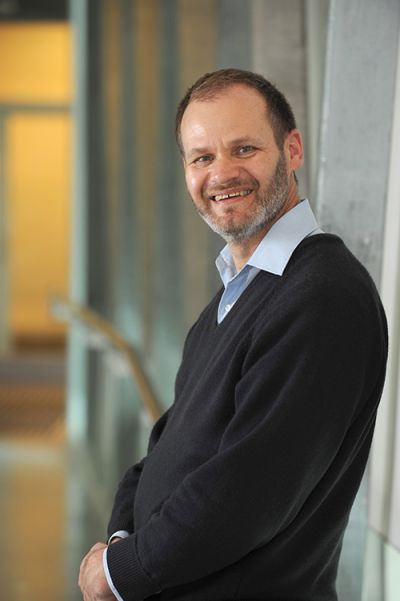How white blood cells are made: ARMI researchers provide gene clue in international study

A multidisciplinary effort by an international team of scientists including Australian Regenerative Medicine Institute (ARMI) researchers at Monash University (Melbourne) has discovered a significant role for the SMARCD2 gene in white blood cell development.
The results define the genetic causes of a rare hereditary white blood cell disorder, and have implications for other blood diseases such as leukaemia.
Published online today in Nature Genetics, the extensive 5 year study involving a global team was led by scientists from Germany, and involved collaborators in Norway, UK, Lebanon, USA and Australia.
The German researchers identified a defective SMARCD2 gene as a candidate disease gene in families with a white blood cell defect. The Australian ARMI team, consisting of Professor Graham Lieschke and PhD student Vahid Pazhakh, studied the SMARCD2 gene in zebrafish models.
They confirmed that in zebrafish, normal SMARCD2 function was required for normal neutrophil production – neutrophils are a type of white blood cell that protects the body from infections. Other scientists in the team performed their studies in cell lines, in mice and in leukaemia cells, which all contributed to implicating the gene as important in neutrophil development.
“Our studies established that a normal SMARCD2 gene was needed to make neutrophils, and we believe this gene function must be important because it appears the same in humans and zebrafish” said Professor Graham Lieschke.
“Patients with genetic diseases that cause low neutrophil numbers, or defective neutrophils, such as Severe Congenital Neutropenia (SCN) are vulnerable to recurrent infections. Knowing what genes cause these diseases helps improve diagnostic certainty for these patients and their families.
“While there are some very effective treatments for most SCN patients, learning more about the precise genetic cause may lead to more specific therapies. It also reveals new genes and pathways that regulate white blood cell development.
“Often, these pathways turn out also to be important for other diseases where white blood cell function is impaired, or where the production of white blood cells goes awry, such as leukaemia.” said Professor Lieschke.
The Lieschke group at ARMI studies the haemopoietic system and leukocytes. The haemopoietic system is a collection of organs and tissues (bone marrow, spleen, lymph nodes etc.) responsible for the production of blood in the body. They specialise in using zebrafish to study blood cell development and function in health and disease.
Contact Information
Professor Graham Lieschke
Group Leader, ARMI
Phone: +61 3 9902 9720
Email: Graham.Lieschke@monash.edu
Mr Silvio Tiziani
Chief Operating Officer, ARMI
Phone: +61 (0)3 9902 9603
Mobile: +61 (0)4 1853 6209
Email: silvio.tiziani@monash.edu
Notes to Editors About ARMI
The Australian Regenerative Medicine Institute (ARMI) is dedicated to unlocking the regenerative capabilities of the human body. ARMI is a medical research centre based at the Clayton Campus of Monash University. Boasting 15 research groups studying a variety of regenerative approaches, ARMI is one of the largest regenerative medicine and stem cell research hubs in the world.
